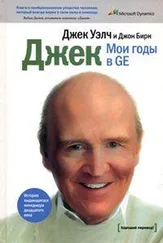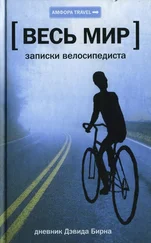I have come to accept that things aren’t going to change overnight, but that this event might be more about bringing a lot of disparate folks together at an opportune moment. It might serve as a kind of tacit encouragement, a visible acknowledgment that change is possible, maybe even likely, and that bike riding as a means of transport in New York City might be okay—if not now, then certainly in the very near future.
In the end, the event, which took place in October 2007, was successful, though I think it ran a little too long. We erred on the side of caution and maybe had more “acts” than we needed, as we were worried that we might not have enough content. We had plenty. It moved along fine but once in a while even I wanted to hit the fast forward button.
Rules of the Road
I might be unrealistic, but I think that if bikers want to be treated better by motorists and pedestrians then they have to obey the traffic laws just as much as they expect cars to, which isn’t saying much in New York. Bikes should have to stop at red lights and stop signs. Certainly if cars are expected to, then cyclists should too. Bikes should ride with the flow of traffic, not against it. And if there is a bike lane, the cyclists should stay in it and not ride in the middle of the street or on the sidewalk. How does one modify New York cyclists’ behavior? How does one modify any public behavior? Does modification require enforcement? The laws for such moving violations are already on the books, and I wonder, if they were enforced, would that work? Ideally, though, it would be great if there were a way to make this happen without requiring more cops or harsher penalties. Positive reinforcement works best, or so I have been told.
Likewise—now don’t laugh—cars and trucks should view the bike lanes as if they are sacrosanct. A driver would never think of riding up on a sidewalk. Most drivers, anyway. Hell, there are strollers and little old ladies up there! It would be unthinkable, except in action movies. A driver would get a serious fine or maybe even get locked up. Everyone around would wonder who that asshole was. Well, bike lanes should be treated the same way. You wouldn’t park your car or pull over for a stop on the sidewalk, would you? Well then, don’t park in the bike lanes either—that forces cyclists into traffic where poor little meat puppets don’t stand a chance.
Same with pedestrians—who in New York famously saunter out into traffic wherever they see a little gap. They’ve got enough brains not to walk in front of a truck, but they’ll step right into the path of a cyclist, thereby initiating a game of urban chicken. The cyclists then have to slam on their brakes to avoid Mr. BlackBerry or Ms. Check-Me-Out.
As I write this in 2009, Janette Sadik-Khan, the new transportation commissioner, and others have made some changes and are initiating a host of improvements that are nudging New York in a new direction—toward being a more livable and sustainable city. In the summer of 2008 the city instituted Summer Streets, a series of car-free days in the summer during which Park Avenue and other streets that connect Central Park to the Williamsburg Bridge were all closed to automobile traffic. A significant new bike lane seems to be added almost monthly—one amazing stretch on Broadway with outdoor seating goes from Forty-second Street to Thirty-fourth. Prince Street now has a bike lane its entire length, but Grand Street has one that has met with some local resistance.
I ask Janette where she sees New York as far as transportation in ten years.If the city continues on the path that it is on now, with attention to sustainability and transportation balance, in ten years we will have a good network of rapid bus routes that reaches all five boroughs, we will have many more bicycles on the streets (perhaps more than we can imagine if Albany fails to finance public transit!), and they will be fully integrated into the traffic system and the places that are now overpaved will have been turned into neighborhood plazas or more room for pedestrians. The city will be even safer as it continues to eliminate hot spots and redesign streets with traffic safety as the top priority. Times and Herald squares will take their places among the best and most-visited public squares in the world. There will be less motor vehicle traffic overall because we will have some form of congestion pricing or toll cordon around Manhattan—if only because it is so badly needed to help fund mass transit. Cities across America will be moving in this direction as well as they take their cues from a greater, greener New York.
Then I ask her to extend that to one hundred years . . . according to Enrique Peñalosa, ex-mayor of Bogotá, thinking long term frees us from our habitual cynical instincts.Certainly there will be many forks in the road and choices the city will make over the next century, and technological leaps are hard to predict, but I think we can be sure that information technology will be fully built into the transportation system, so that the full array of one’s travel choices at any given moment from bus arrivals to parking availability will be accessible and clear from one’s home, workplace, mobile device, screen on your handlebars, chip in your head, or whatever is in use in this regard in 2109. Appropriate technology will have fully taken hold, so bicycles will be pretty standard for short trips and the zoning change that will be approved this year will mean that bike parking and accessibility will have been built directly into the city’s building stock. Cars will be more like today’s smart cars in scale but zero-emission and with collision avoidance systems built in, and the city will have addressed its problems with the movement of goods as population and overall trade grow—more of our stuff will be moved on trains and by water routes. So too, our crowded skies and airports will see some relief because the short- and perhaps medium-haul air markets will have yielded to far more convenient high-speed rail.
But, I wonder, sensing an uphill battle in some sectors, how does one balance the interests of business, the ordinary citizen, and I guess what might be called “quality of life”?The answer for largely postindustrial cities like New York is that it is not that difficult, because the quality of life is an important part of the business climate. In a knowledge-based economy, people can live almost anywhere and many can pick up and settle in another part of the world with increasing ease. New York has a huge amount to offer but with population growth and development pressure (which will return before long) we still have work to do regarding open space, opportunities for recreation, easing traffic and noise in neighborhoods, transportation choices, crowding on public transit, and so on. The business community in NYC largely sees opportunity when new parks open, when we propose new pedestrian areas in Times Square and even in plans like congestion pricing.
And ultimately what makes a city a place where one would want to live? For decades they were places that the middle class fled.A lot of it has to do with opportunity, choice and the intensive and incredibly varied social and cultural life of a place like New York. Cities have always had that attraction for certain types of people and, as U.S. cities have become less edgy since the 1970s, more and more people want to partake in them. Now the same people who value these things want to raise kids and grow old here and that means reinforcing or adding in the conditions for neighborhoods, open spaces, safer streets, and places to have fun (and not just in clubs and bars) to thrive. The fact that I am transportation commissioner and with my team have the opportunity to create those sorts of conditions with bike-ways, new plazas, traffic calming, and so forth is another one of the great, amazing things about New York.
Читать дальше









